In the third of a series, JNC is teaming up with our friends at Petrolicious to launch simultaneously a video and an article about historically significant Japanese cars. Today’s is special because the featured car belongs to JNC contributor and admin Matt De Mangos. Be sure to check out the excellent Petrolicious and their beautiful short films about vintage cars.
Marques like Nissan and Toyota get most of the attention thrown at Japanese classics these days, but let’s not forget about Mitsubishi. The automaker, known for turbocharged, rally-bred performance machines, has been building enthusiast-oriented sport coupes just as long as any of them, starting with the Colt Galant GTO.

Like its rivals, Mitsubishi was planning a world-class grand tourer as early as 1964 with the Colt Sport concept. Unlike its rivals though, and perhaps wisely, it never put the high-end GT into production. It probably would have lost money on every one, and as the world proved with the Toyota 2000GT, the climate simply wasn’t right for such car.
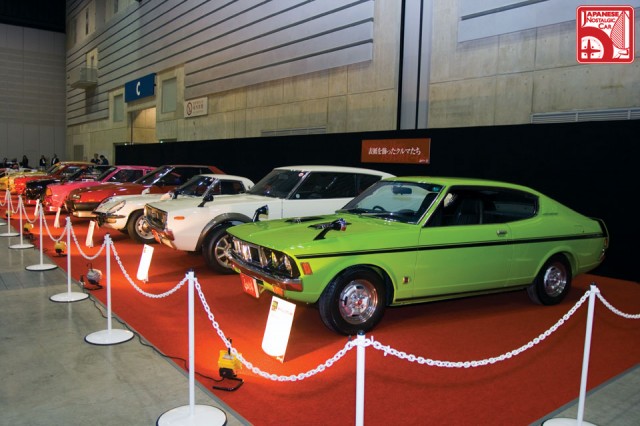
By 1969, after the success of the Colt Galant and an apparent golden age on the horizon, Mitsubishi execs gave the company’s first hardtop 2+2 variant, despite the high costs and low sales projections. They revived the idea of a flagship, debuting a stylish coupe at that year’s Tokyo Motor Show. Based on its Colt Galant sedan, the body was updated with contemporary styling trends. This time, the car would be built primarily for the Japanese market, which had really come into its own with an unquenchable thirst for lightweight performance cars.

A year later, the production Colt Galant GTO was unveiled at the 1970 show, further refining the form into an sinister little street fighter. Mitsubishi called it a “dyna-wedge” shape thanks to its crisp contours and a distinct lack of curves. A menacing reverse-angle nose and split grille inspired subsequent Galant designs well into the 2000s. Perhaps most noteworthy, though, was a unique upturned ducktail which prompted the marketing department to exuberantly refer to the GTO as the “Hip-Up Coupé!” in its advertising.
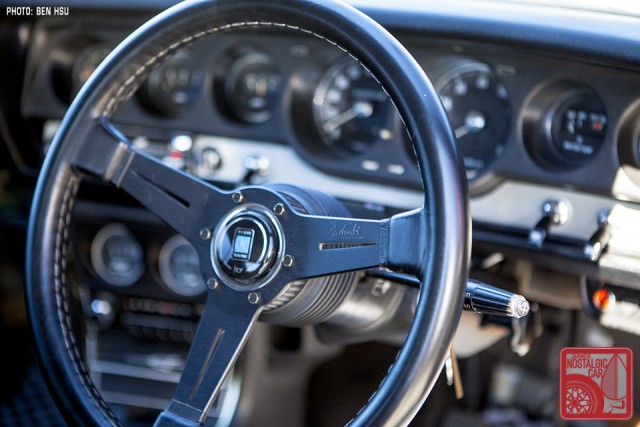
Among the Galant GTO’s motorist-friendly touches were what Mitsubishi called a “flight cockpit” dashboard, with a center console canted towards the driver with no fewer than eight instrument gauges. A sporty three-spoke steering wheel was standard, as was a 4-speed (later upgraded to 5-speed) manual transmission. Originally, designers wanted to match the interior trim to the body color, but it was deemed too costly.
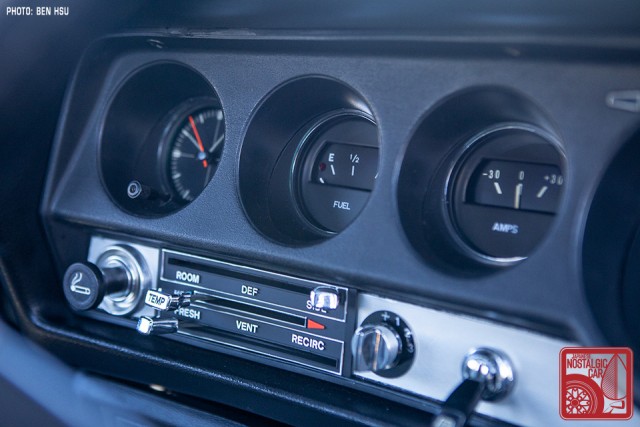
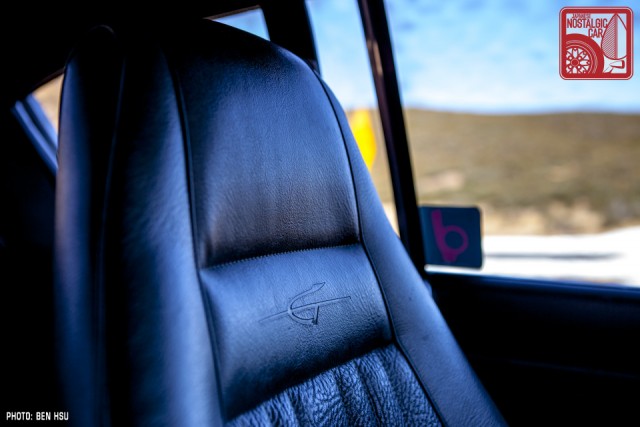
The GTO was aimed squarely at a new segment of driver-oriented “specialty cars” like the Isuzu 117 Coupe, Nissan Silvia, and what would become its biggest competitor, the Toyota Celica. Toyota, in fact, even countered few years later with the Celica Liftback, featuring almost an exact replica of the GTO’s back half (or at least the Japanese motoring press seemed to think so at the time).


Mitsubishi began taking orders straight from the floor of the 1970 Tokyo Motor Show. It’s important to note, however, that its full name is Colt Galant GTO, with “Colt” being the make, not “Mitsubishi.” In fact, no Mitsubishi markings whatsoever appear anywhere on the car, except for a tiny triple-diamond logo on the VIN plate.
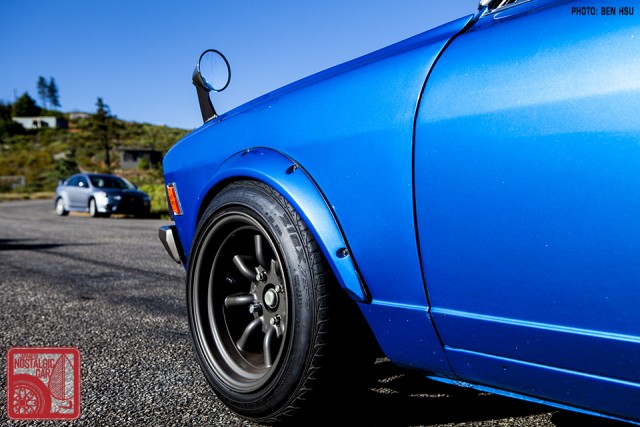
The Galant GTO’s initials, of course, stood for Gran Turismo Omologato. Like the Ferraris and Pontiacs of the same name, it was Italian for “Grand Touring Homologation,” meaning street-legal race cars built so their racing counterparts could qualify in leagues that forbid one-off purpose-built cars.
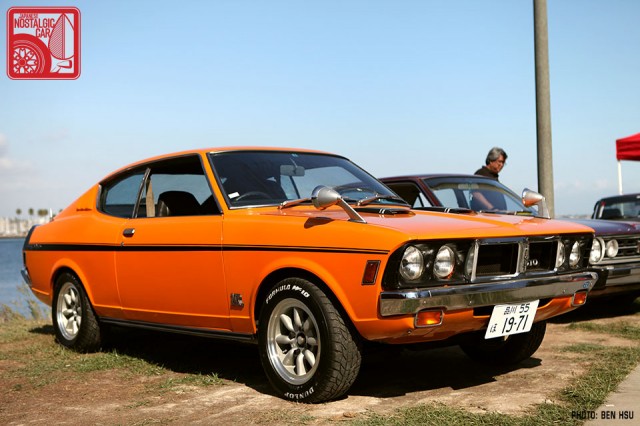
For the top-spec GTO, Mitsubishi introduced in December 1970 the MR, which stood for “Motorsports and Rally.” Under the hood was a 1.6-liter DOHC four fitted with a Solex twin-choke carb good for 125PS at 6800 rpm. Beneath a valve cover slathered in lustrous gold paint was Mitsubishi’s first mass-produced twin-cam head mounted to the company’s evergreen Saturn block. Only around 835 were built before the MR was discontinued in 1972, making them extremely rare.


Despite its name, though, the only record of an official factory racing effort at the 1972 Southern Cross Rally, in which two Galant GTOs were entered. So what happened?


A clue can be found in the Galant GTO R73-X concept that Mitsubishi unveiled at the Tokyo Motor Show in the fall of 1972. Under its hood was a real race motor — the 280PS, 16-valve DOHC inline-four from the Colt F2000 open-wheel racer that took first at the 1971 Japan Grand Prix.

This was the same Tokyo Motor Show at which Nissan debuted the kenmeri Skyline GT-R in race guise and the number 73 incorporated in its livery. Extrapolating from common Japanese naming conventions of the era, it was almost certain that Mitsubishi intended the R73-X to hint at an experimental race car to compete in 1973. However, as students of history will note, the OPEC oil crisis happened instead, forcing Nissan and Mitsubishi to can their motorsports plans.
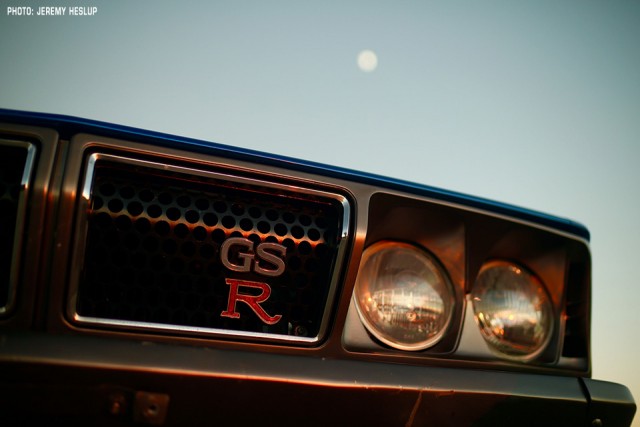
Before that happened, though, in January 1973, Mitsubishi introduced a new top-of-the-line Galant GTO GS-R, or “Grand Sports and Rally.” This is the model JNC‘s own Matt De Mangos owns and spent eight years restoring. In the process, Matt’s made some discoveries, like the fact that the 5-speed transmission is unnecessarily beefy, as if they expected to mate a more powerful engine to it. Rather than the R73-X’s prohibitively expensive mill, however, GS-R models came equipped with a 125PS single-cam 2.0-liter Astron four.
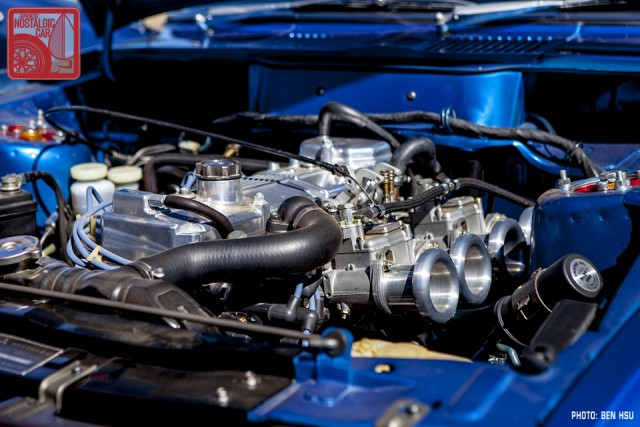
Matt’s car is a rare export model, which Mitsubishi sold in select right-hand-drive countries. As such, it has a few unique bits not found on Japanese-spec cars. For example, the flares and front valance are factory bits, but in Japan they were available only from the Coltspeed catalog, Mitsubishi’s equivalent of TRD or NISMO. What’s even more peculiar is the fact that the body panels have completely different stampings to accommodate the factory flares. It appears that Mitsubishi wanted to give the export models a little something extra.
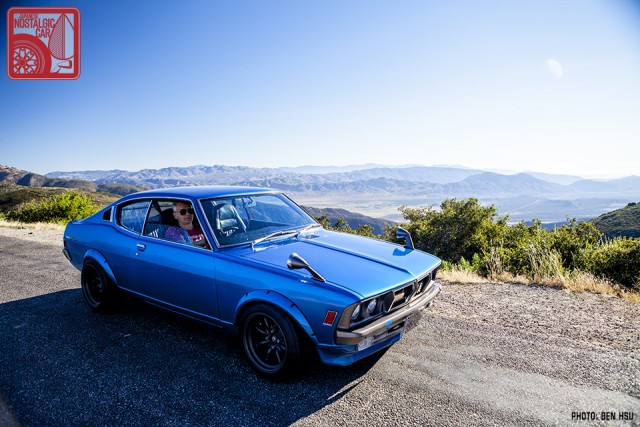
Due to its proportions, the Galant GTO looks deceptively large. In fact, its wheelbase is about the same as that of a Datsun 510. Though it lacks the 510’s independent rear suspension, opting instead for a live axle with leaf springs, the overall feeling is similar due to its size and weight, just under 2,200 pounds. It’s a blast to drive in the twisties, its rally car aspirations baked in to the handling.
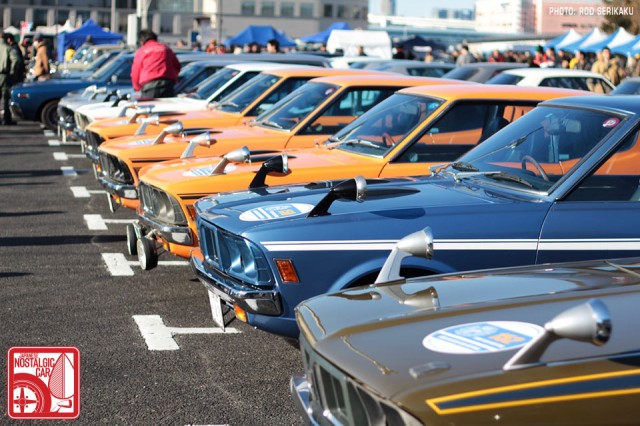
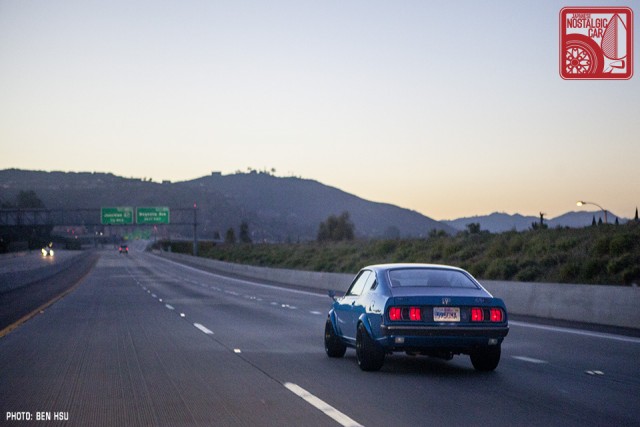
Despite the fact that Mitsubishi is a massive company with businesses in everything from banking to ships, Mitsubishi Motors itself is tiny compared to other Japanese automakers. Mitsubishi built about 96,000 Galant GTOs, compared to the approximately 1.1 million Celicas Toyota made. Today, an estimated 500 are left. A couple thousand were produced in Matt’s configuration — GS-R drivetrain with factory flares and aero — but today that number is only about a dozen, making them perhaps the rarest Galant GTOs of them all.






such a nice and overlooked car.. wish there were more around…
Wow. this car is beautiful. I’d love to see it in person sometime!
Almost one year later, i got to see it in person!
These are probably the best looking Mitsubishis ever.
I’m not gonna argue with you!
It’s a good day for car videos, Jay Leno has a video of the Celica too.
That moment when you see a JNC shirt in the video and the same shirt is being advertised just to the right of the video, hahhahaa
Ha! We couldn’t have planned that better if we tried!
Fantastic partnership between JNC and Petrolicious to bring this gorgeous car and Matt’s unique story to life — shows how restoring a car is more than meets the eye. Love how Matt said, “This car had to go back to school” and that he had to learn Japanese, make friends with people around the world and make things that weren’t available bc there was no catalog. Ben,your words and historical detail gives perspective to how truly rare this car was and really is today. Thank you for sharing the story.
Thank YOU for reading!
This is a long shot because it’s 2018 but I own a 73 GTO GSR original gold paint with the factory flares everything you mentioned 90,000 MILES on the clock but I’m in New Zealand and can’t find no parts for mine and would like to know how I find out if mines the real deal?
These were also made in New Zealand, they are most commonly found in Japan, New Zealand, Malaysia in that order with a few in Australia and England. They production stopped around 1976. If you ever want to buy one or get parts I would suggest looking in New Zealand as the sell for a reasonable price with parts that are not too hard to find.
“not to hard to find” Maybe 10-20 years ago. Or unless you have a decades old parts stash.
Agree its not too hard 10-20years ago but today its very hard to get source for this car parts and hey i had been looking for weatherstrip for my car since 2006 until today cant find any 🙁
I owned early 1973 Colt Galant GTO 17X-II trim with factory 4G35 engine.
I also owned a 1700X-II (1700SL) but it had a 4 speed and 4G32 motor (which is the factory 1700cc twin cam / twin solex engine) – it was mettalic bronze with black 1/2 stripe (only behind door backwards) along the length
Bought it from Auburn Motors (corner of Auburn St/Khyber Pass Road) for NZ$5500.
Had it from 1975 to 1987, traded it in for a Mini Cooper 1275S.
They were not built in NZ. My dad was a Chrysler/Mitsubishi dealer and Galant GTOs all came in fully built up from Japan. The Galant GL coupe was assembled in NZ for a time before being replaced by the Galant 1850. Both of these looked very different from the GTO and were no where near as cool. I saw several over the years and in the sevemties in particular they were very popular, although quite pricey. Most were white, although there was the blue seen here as well as an unusual gold and I have seen a couple of earlier 1700 models in khaki green which sound awful but is surprisingly attractive. I do recall a guy in a place called Waikanae north of Wellington had a metallic blue GTO with a 350 small block in it. That was an interesting car. Always wondered what became of it.
Im pretty sure all gs-r’s came with factory flares and the body panels are different as the wheel arches are slightly bigger.
The early ones did but the later models didn’t. I have a 75 gsr.
Likely yours is a re-badged GS model.
Thanks to Ben, Matt, and the JNC crew from the Petrolicious team for helping to make this video possible and for the terrific article here. It’s always fun when we get to partner up with JNC.
And thanks to you, Aaron. If you weren’t a JNC enthusiast, this might not have happened!
Thank you, Aaron, for reaching out (almost a year ago)! The video was absolutely stunning!
As it happens, I first saw Matt’s car at JCCS 2014 and I’m thrilled that we were able to release this episode only days before JCCS 2015. I hope everyone can see this car in person this weekend – it’s a stunner!
Great car; it’s the essence of JNC style.
Have always loved the design of these, I very nearly bought the later, less pretty brother years back but passed as it was a full resto case and I already had the Celica and Mk2 – plus the guy wanted $1k for it or else he’d send it to the crusher. I’m not sure what his logic was there, “If you don’t give me a grand I’ll sell it for $100 in scrap weight!”
http://s234.photobucket.com/user/Galant_GTO/media/GCCoupe1.jpg.html
Great video and post! I truly believe these are wonderful cars but I’m a bit biased; the orange MR pictured above is mine…
Thx Myron! your bias is welcome here haha
Nice piece! Glorious machine…
Hmm, alternate title: “Glorious Gal Ant”?! haha
I haven’t forgotten but here’s a major shoutout to the contributors: Dave – John – Mikey – Ben – Clark – Duncan – Benny H. – & James. Couldn’t have done it without you guys!
Bloody awesome.
Presently restoring a 75 GTO GSR.
Verified by Mitsubishi NZ as an original GSR. Brought it many years ago when they were cheap but now prices are rising and parts difficult to find here in New Zealand .They came to NZ fully built up. Have dismantled a few rusty ones over the years for parts ,but hard to find things like door rubbers etc . If anyone has any leads on where to obtain parts it would be appreciated.
Google ‘Scott’s Old Auto Rubber’, as Scott is brilliant and can sell you off-the-shelf lengths of standard profiles, that though they will require joining will near certainly suit your car.
Gethings Mitsubishi in upper hurt. An old guy called Dave if he still works there. I got original brushes rubbers and gsr badges New. Not cheap though $$$$
Hi all, I have 1973 GS Galant GTO, I am looking for steering wheel & gear stick, thanks Pete
Nice Cars The GTO , i Have one for sale $$ with 2 x spare Saturn DOHC AIII Saturn Engines & new Parts such as OS piston kits and a Gasket set Etc and much more !
Steve, I am interested in what you are selling. Please contact me directly at mtv@neo.rr.com . Thanks!
Hi Myron , What do you need to know about the car & Engines Etc ?
I’m interested in the whole package.
Where are you living Myron ? the car is in Sydney.
I’m in Akron, Ohio USA. Shipping is not a problem.
Ok Myron , What do you need to know re the GTO Etc ?
Thorough description of the car, listing of parts and pics would be helpful. Might be best to contact me directly at mtv@neo.rr.com . Thanks!
Hi steve if you still have car available iam in perth and dont mind flying over to view and make an offer
Hi Steve, did Myron go through with the deal, if no contact me moof@snap.net.nz
May sell mine. didnt realise how rare the gto is now, i know only 200 were imported into the uk in the 70s. i was customising one in the 80s fitted with a rover v8 but gave up when i moved house and ended up cutting it up. still have the rear 1/4s, doors, interior rear axle etc etc. also have my other 1977 gto in storage for the last 25 years or so, probably the last one left in the UK. as have not seen any at car shows, and i go to quite a few!!
my mrs says i should sell it but it was the first decent car i ever purchased. i brought it from my parents who were the second owners. its still in good condition and was driven into temporary storage but has been blocked in by my many other projects!!!
If anyones interested make me an offer i cant refuse. 🙂
Hi Derek, Would it be possible to see some photos? you can send them to me at moof@snap.net.nz
Hi
Would love to get my hands on a Mitsubishi Galant Colt 1.6 (1970*76). Anybody out there with one to sell please drop me a line.
I live in London, UK
Very good write-up. I absolutely love this site. Continue the good work!
Hi
Would love to get my hands on a Mitsubishi Galant Colt 1.6 (1970-76). Anybody out there with one to sell please drop me a line.
I live in London, UK
i have a 2litre Gto/gsr plus tons of spares. barn stored for last 25 years for restoration. £10k. in hertfordshire.
Love this write up and the photos are awesome. Such a beautifully built GTO – I’m actually lucky enough to own a GTO GSR like this one, although it is in good condition it is not up to the same quality as this build… yet.
Oh and I believe GSRs were originally introduced in 1972
Or was it 71….
My family’s love with gto began when my mom bought her forst car being a 1.6 liter gto.
Throgh out the years we bought five galant gto for barts or to recover and use tree ofthem being gs-r ‘s . We currently own
Two ofthem one being a 1974 colt galant gto gsr that we resorted in 8 years and other one is still waiting us to start building it.
Matt, love your car. My first car in 1986 was a ‘73 GTO GS. I’m on a bit of a nostalgic journey and recently purchased a ‘73 project GTO. I’m interested to know what colour blue you painted your car. This looks a similar blue to the one I first owned and would like to paint my new car In the same blue after a bare metal strip. Was it a custom colour or the original colour ie ‘Tahitian Blue’
There are quite a few parts for GTOs on http://www.jauce.com, that’s where I buy my Subaru SVX stuff from.
Does anyone know the number of surviving GTO MR, If there were only 830 built how many left now? They came out only in japan as the top spec and had 1600 DOHC twin side drafts and the only model in those first 3 years to have a 5 speed manual.
Are there any in NZ or OZ or anywhere other than Japan?
I have a 1973 Galant GTO Gsr with factory flares in great condition with no rust
what is this worth.